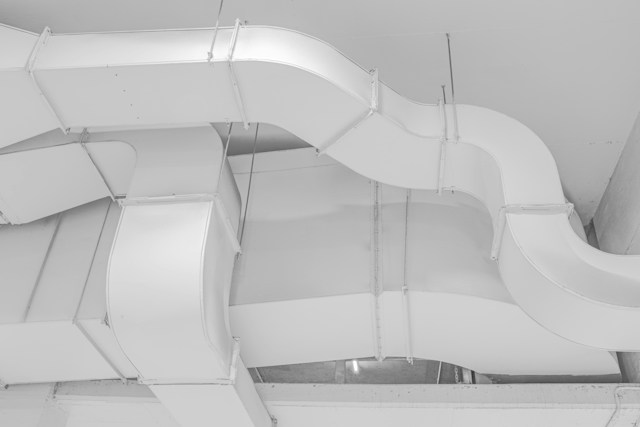Large spaces, such as warehouses, factories, and commercial buildings, often pose unique challenges when it comes to insulation and ventilation. Without proper measures in place, these spaces can become uncomfortable, inefficient, and even hazardous. In this blog post, we will explore six useful tips that can help you effectively insulate and ventilate large spaces, ensuring optimal comfort and energy efficiency.
1. Assess the Space
Assessing the space is a crucial first step when it comes to insulating and ventilating large spaces. It involves understanding the size, layout, and function of the area to identify potential problem areas. By assessing the space, you can determine the specific needs of the area, such as occupancy levels, activities performed, and required temperature range. This information will guide you in making informed decisions throughout the insulation and ventilation process. It is important to consult with experts and gather as much data as possible to ensure that the insulation and ventilation systems are tailored to meet the unique requirements of the space. By conducting a thorough assessment, you can lay the foundation for an effective insulation and ventilation strategy.
2. Choose the Right Insulation Materials
With numerous insulation materials available in the market, choosing the right one for your large space is essential. Insulation technicians at Aeon Energy advise that factors such as thermal conductivity, moisture resistance, durability, and fire retardancy should be considered. Fiberglass insulation is a popular choice due to its affordability and effectiveness in reducing heat transfer. Mineral wool, known for its fire-resistant properties, is also widely used. Cellulose insulation, made from recycled materials, offers excellent thermal performance and soundproofing capabilities. Additionally, polyurethane foam and polystyrene are known for their high insulation values. It’s advisable to consult with experts or review manufacturer guidelines to select the most appropriate insulation material for your needs.
3. Seal Air Leaks
Sealing air leaks is crucial in effectively insulating and ventilating large spaces. Air leaks can lead to energy loss, temperature inconsistencies, and compromised indoor air quality. Identifying common areas of air leakage, such as doors, windows, and gaps between walls, is essential. Weatherstripping and caulking are effective methods to seal these leaks and prevent air infiltration. By minimizing air leakage, you can enhance the energy efficiency of your space, maintain a consistent indoor climate, and improve overall comfort. Regular inspections and maintenance are important to identify and address any new or existing air leaks promptly. Taking proactive measures to seal air leaks will contribute to a more efficient and comfortable environment within your large space.
4. Install Proper Ventilation Systems
Installing proper ventilation systems is crucial for maintaining a healthy and comfortable indoor environment in large spaces. Effective ventilation helps remove pollutants, control moisture levels, and promote good air quality. One common type of ventilation system is mechanical ventilation, which uses fans or blowers to circulate air and remove stale air from the space. Another option is natural ventilation, which utilizes windows, vents, or openings to allow fresh air to flow in and out. The choice of a ventilation system depends on factors such as the size of the space, occupancy levels, and local climate conditions. Proper ventilation design should consider the airflow requirements, the location of intake and exhaust points, and the proper distribution of fresh air throughout the space. By installing the right ventilation system, you can ensure a healthy and comfortable environment for occupants while minimizing the risk of moisture-related issues and improving overall indoor air quality.
5. Insulate Walls and Ceilings Effectively
Proper insulation of walls and ceilings is critical for temperature control and energy efficiency. Implement insulation techniques such as cavity wall insulation, blown-in insulation, or insulated panels to reduce heat transfer and improve thermal performance. Additionally, consider the recommended insulation thickness for your specific space. Thicker insulation may be required for spaces in extreme climates or with high energy demands.
6. Maintain and Monitor Insulation and Ventilation
Insulation and ventilation systems require regular maintenance and monitoring to ensure they continue to perform optimally. Conduct routine inspections, check for signs of damage or wear, and promptly address any issues that arise. Monitor energy consumption to identify potential inefficiencies and make necessary adjustments. Regular maintenance and monitoring will help extend the lifespan of your insulation and ventilation systems while maximizing their effectiveness.
Proper insulation and ventilation are vital for large spaces, providing comfort, energy efficiency, and a healthy environment. By assessing the space, choosing the right materials, sealing air leaks, installing appropriate ventilation systems, effectively insulating walls and ceilings, and maintaining and monitoring the systems, you can create an optimized space that meets your specific needs.
Remember, each large space is unique, and there may be additional considerations based on your particular circumstances. Consult with insulation and ventilation professionals to ensure you make the best choices for your specific requirements. With these six tips in mind, you can embark on your insulation and ventilation journey for a well-insulated and well-ventilated large space.







